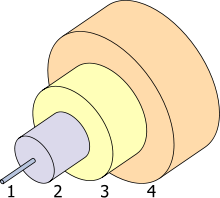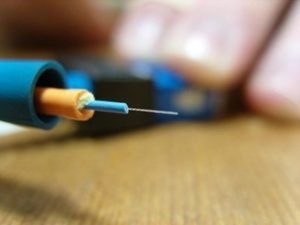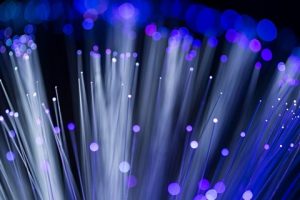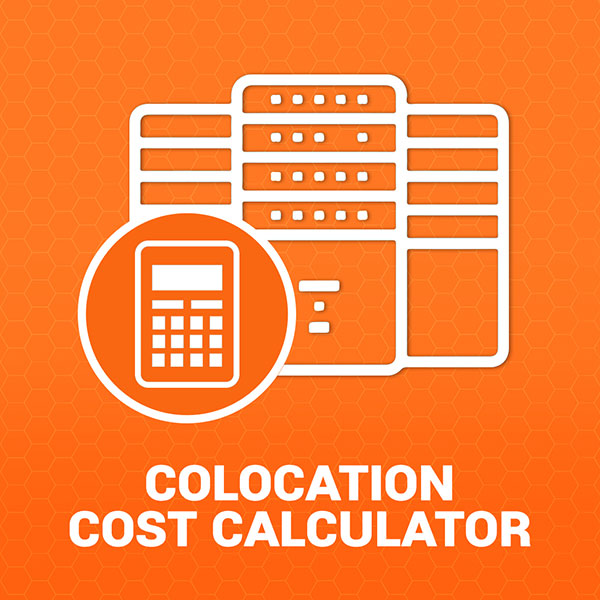An Overview of Fibre Optic Cables
In recent years, the large-scale application of multi-mode fibre in data centers and the demand for the high rate and bandwidth transmission are driving the multi-mode fibre through unprecedented growth and innovation. From OM1 to OM5, the bandwidth performance of multi-mode optical fibre is improved. The solution for multi-mode transmission within 100m application scenario has been dominant based on the low cost and power consumption of VCSEL optical modules.
We get a lot of questions about fibre optic cables and systems in data centres, so we’re happy to provide some answers.
How much data can fibre optic systems transmit?
A new fiber-optic system can carry 800 gigabits of data per second; this is a big upgrade from top speeds of 100 or 200 gigabits in today’s data centers.
What are the main fibre modes?
There are three main types of fiber optic cables:
- Plastic optical fiber (POF)
- Single mode
- Multimode
Plastic Optical Fibre
Transparent glass or plastic fibers which allow light to be guided from one end to the other with minimal loss.
Single Mode Fibre Optic Cable
Single mode fibre optic cable has a small diametral core that allows only one mode of light to propagate. For this reason, the number of light reflections created as the light passes through the core decreases, lowering attenuation and creating the ability for the signal to travel further.
Typical Structure of a Single Mode Fibre Optic Cable

The following numbers and explanations describe the components of single mode fibre optic cable:
- Core 8–9 µm diameter
- Cladding 125 µm diameter
- Buffer 250 µm diameter
- Jacket 900 µm diameter
Single mode fibre is usually 9/125 in construction. This means that the core to cladding diameter ratio is 9 microns to 125 microns.
Common Uses for Single Mode Fibre Optic Cable
Single mode fibre optic cable is typically used in long distance, higher bandwidth runs by telephone and CATV companies, as well as colleges and universities.
Multimode Fibre Optic Cable
 Multimode fiber optic cable has a large diametral core that allows multiple modes of light to propagate. The number of light reflections created as the light passes through the core increases and makes it more possible for more data to pass through at a given time. Due to the high dispersion and attenuation rate with this type of fibre, the quality of the signal is reduced over long distances.
Multimode fiber optic cable has a large diametral core that allows multiple modes of light to propagate. The number of light reflections created as the light passes through the core increases and makes it more possible for more data to pass through at a given time. Due to the high dispersion and attenuation rate with this type of fibre, the quality of the signal is reduced over long distances.
This application is typically used for short distance, data and audio/video applications in LANs. RF broadband signals, commonly used by cable companies, cannot be transmitted over multimode fibre.
Multimode fibre is usually 50/125 and 62.5/125 in construction. This means that the core to cladding diameter ratio is 50 microns to 125 microns and 62.5 microns to 125 microns. Let’s focus our attention on what is happening inside the multimode fibre.
Step-Index Multimode Fibre
Due to its large core, some of the light rays that make up the digital pulse may travel a direct route, whereas others zigzag as they bounce off the cladding. These alternate paths cause the different groups of light rays, referred to as modes, to arrive separately at the receiving point. The pulse, an aggregate of different modes, begins to spread out, and lose its well-defined shape. The need to leave spacing between pulses to prevent overlapping limits the amount of information that can be sent. The step-index multimode fibre is best suited for transmission over short distances.
Graded-Index Multimode Fibre
This type of multimode fibre has a core in which the refractive index diminishes gradually from the center axis out toward the cladding. The higher refractive index at the centre makes the light rays moving down the axis advance slower than those near the cladding. Due to the graded index, light in the core curves helically rather than zigzag off the cladding; this reduces its travel distance. The shortened path and the higher speed allow light at the periphery to arrive at a receiver at approximately the same time as the slow but straight rays in the core axis. This results in a digital pulse that suffers less dispersion. The graded-index multimode fibre is best suited for local-area networks.
What are the benefits of using multimode fibre optic cable?
 Multimode fibre (MMF) is still the most common choice in modern enterprise data centres. MMF was first deployed in the early 1980s, with a light-carrying core diameter approximately six times larger than single mode fibre. It provides a logical solution to the alignment challenges of getting light into and out of the cabling efficiently.
Multimode fibre (MMF) is still the most common choice in modern enterprise data centres. MMF was first deployed in the early 1980s, with a light-carrying core diameter approximately six times larger than single mode fibre. It provides a logical solution to the alignment challenges of getting light into and out of the cabling efficiently.
A key benefit of using multimode fibre is that it is a low-cost way to transport high data rates over relatively shorter or smaller distances. MMF has evolved from being optimized for multi megabit-per-second transmission, using light-emitting diode (LED) light sources, to being optimized to support multigigabit transmission using 850 nm vertical cavity surface emitting laser (VCSEL) sources which tend to be more affordable than single mode varieties.
This advancement in performance is clear, due to the classifications assigned to MMF by industry standards. OM1 and OM2 were the earlier MMF types with low modal bandwidth and very limited support for higher speed optics. OM3 and OM4 represent the newer, laser-optimized MMFs that are typically installed in modern data centres.
What are the benefits of single fibre cables between data centres?
Single mode fibre is typically used for long distance runs. It is most commonly used by internet service providers and telephone companies because of its ability to span long distances. The equipment needed to work with single mode fibre is typically more expensive. This is due to the center core of the fibre optic cable; it is small and requires more light than other types of cable. For this reason, a brighter, more powerful light source is required to use the cable.
What is the capacity of the fibres in the current market?
Modern fibre cables can contain up to a thousand fibres in a single cable with the potential bandwidth in the terabytes per second. In some cases, only a small fraction of the fibres in a cable may actually be “lit”. Companies can lease or sell the unused fiber to other providers looking for service in or through an area. Depending on specific local regulations, companies may “overbuild” their networks for the specific purpose of having a large network of dark fiber for sale; this strategy reduces the overall need for trenching and municipal permitting. They may also deliberately under-invest to prevent rivals from profiting from their investment.
The highest strand-count single mode fibre cable commonly manufactured is the 864-count cable; it has 36 ribbons each containing 24 strands of fibre.
What is wavelength multiplexing in multimode optical fibres?
The capacity of optical fibre transmission systems can be increased by multiplexing several signals at different wavelengths on each fibre. Multiplex system designs can be used with multimode fiber transmission systems. In each case, the required multiplexer size and material properties are calculated as functions of the basic parameters of the fibre system.
For fibre systems of the type currently being tested, a compact (approximately 2 mm in diameter x 1 cm long), rugged, three-channel multiplexer could be constructed using a blazed plane reflection grating and graded-refractive-index (GRIN) optics. It appears that such devices can be produced using available materials and technology.
Multiplexers using thick gratings or multilayer dielectric filters are larger, more complicated, and require materials that push the boundaries of available technology. Multiplexers using a multiple thick grating or hologram could be even smaller than the blazed-grating devices, but materials having the quired characteristics have not been demonstrated.
Closing Thoughts
Nuday Networks is proud to be one of the newest, most robust colocation data centers in Canada is using the top network providers with industry standard network connections to deliver the high-quality colocation services. If you have more questions about the best fibre optic systems or colocation services for your business, talk to an expert at 416-477-2470.

